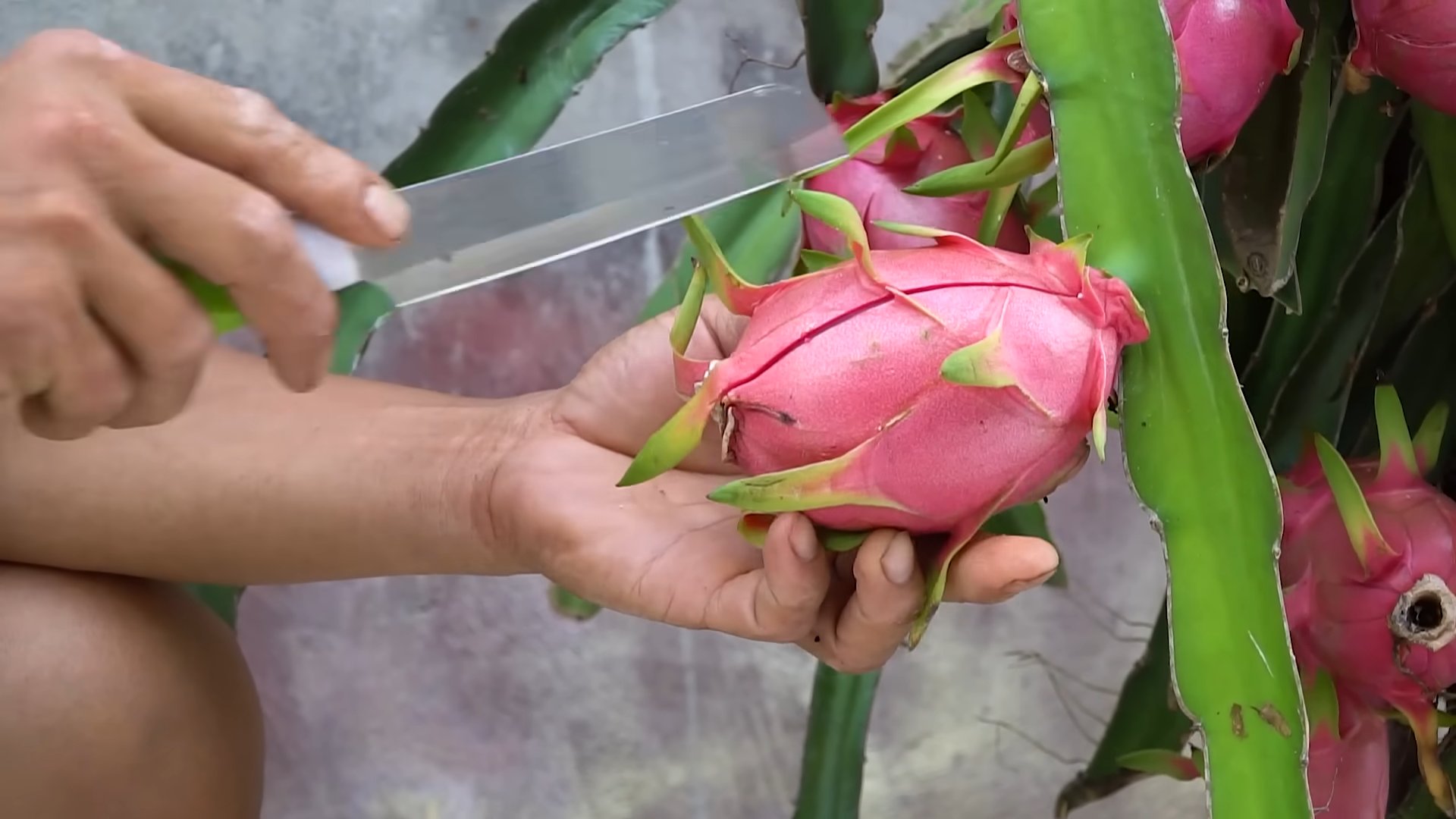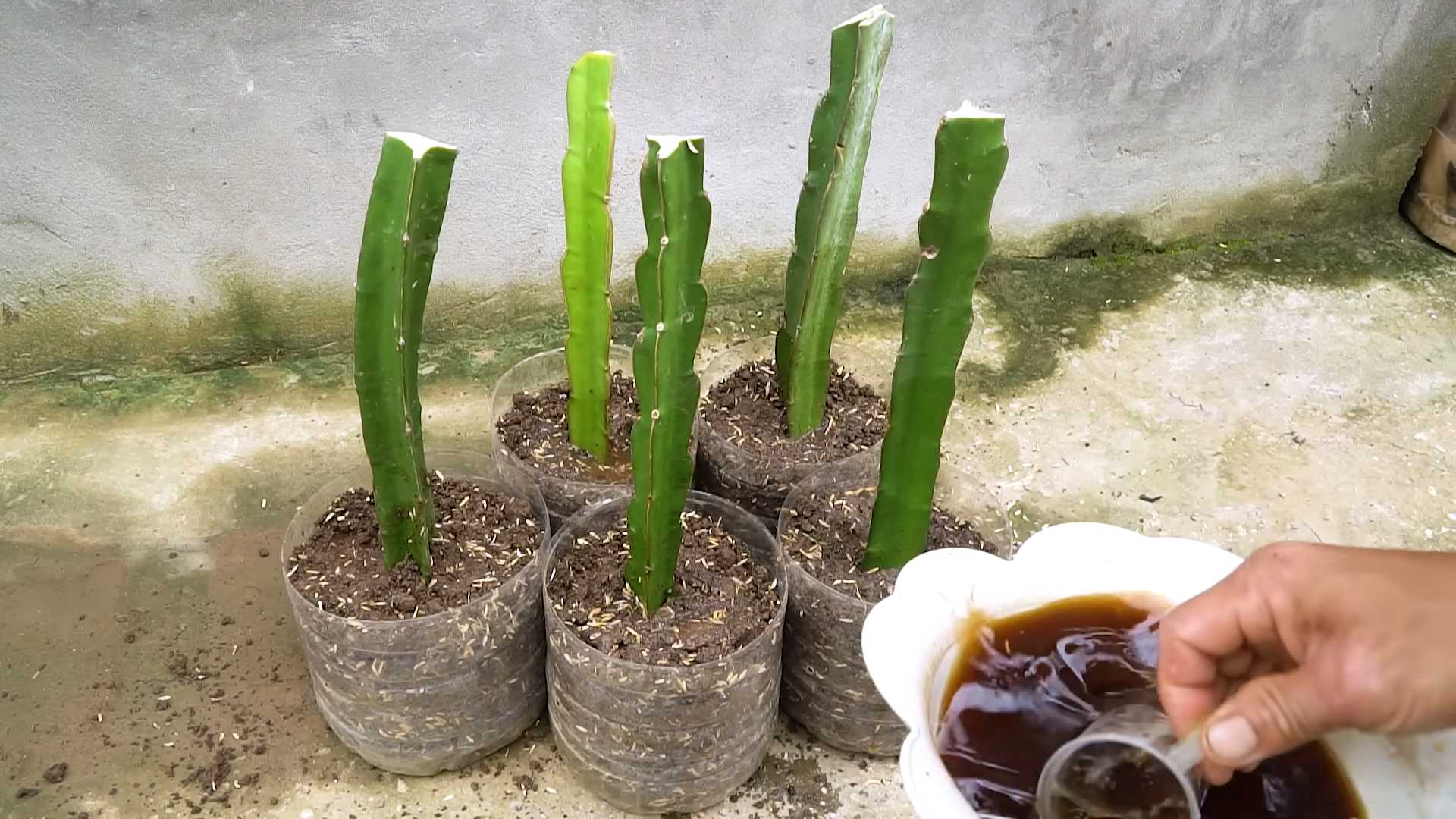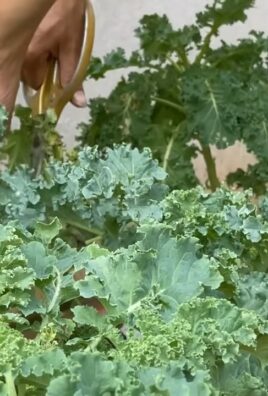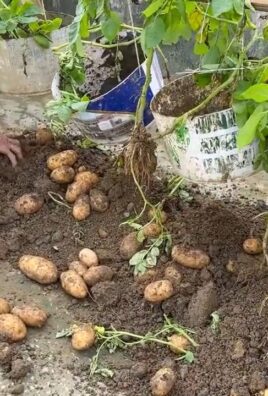Grow Dragon Fruit: Your Guide to Exotic Home Gardening
Grow Dragon Fruit – it sounds exotic, right? And it is! But what if I told you that cultivating this vibrant, delicious fruit in your own backyard is easier than you think? This isn’t some far-off, unattainable dream; with a few simple DIY tricks and a dash of patience, you can enjoy the sweet reward of homegrown dragon fruit. I’ve always been fascinated by the unique beauty of this fruit, its vibrant pink skin and sweet, slightly tangy flesh. Historically, dragon fruit cultivation has been prevalent in Southeast Asia and parts of Central and South America, but now, thanks to readily available resources and a growing interest in home gardening, it’s becoming increasingly accessible to everyone.
For years, I’ve been experimenting with different gardening techniques, and I’m excited to share my most effective Grow Dragon Fruit strategies with you. This isn’t just about growing a plant; it’s about connecting with nature, enjoying fresh, healthy food, and adding a touch of the exotic to your landscape. In today’s fast-paced world, many of us crave a connection to something more natural and fulfilling. What better way to achieve this than by nurturing a plant that yields such a unique and rewarding harvest? This DIY guide will equip you with the knowledge and confidence to successfully grow your own dragon fruit, from propagation to harvesting.
Why Grow Your Own Dragon Fruit?
Beyond the sheer satisfaction of growing your own food, there are numerous benefits to embarking on this exciting gardening journey. You’ll have access to fresh, pesticide-free fruit, knowing exactly where it came from and how it was grown. Plus, dragon fruit plants are visually stunning, adding a tropical flair to your garden or even a patio container. So, let’s dive in and discover the secrets to successfully Grow Dragon Fruit at home!

Growing Dragon Fruit: A DIY Guide
I’ve always been fascinated by dragon fruit, those vibrant, otherworldly fruits with their striking appearance. So, I decided to take on the challenge of growing my own. It’s surprisingly rewarding, and I’m here to share my experience with you. This guide will walk you through the entire process, from choosing your cuttings to harvesting your delicious fruit.
Phase 1: Acquiring and Preparing Your Dragon Fruit Cuttings
- Source your cuttings: The easiest way to start is by obtaining healthy cuttings from a mature dragon fruit plant. Ask a friend, check local nurseries, or even explore online plant exchanges. Look for cuttings that are at least 12-18 inches long, with several nodes (the points where leaves or branches sprout). Avoid cuttings that show signs of disease or damage.
- Prepare the cuttings: Once you have your cuttings, allow them to callus over for a few days. This helps prevent rot. Simply let them sit in a dry, shaded area. This crucial step allows the cut ends to heal and reduces the risk of fungal infections.
- Optional: Dip in rooting hormone: While not strictly necessary, dipping the cut ends in a rooting hormone powder can significantly increase your success rate. Follow the instructions on the rooting hormone package carefully.
Phase 2: Planting Your Dragon Fruit Cuttings
- Choose your planting medium: Dragon fruit thrives in well-draining soil. I recommend a mix of potting soil, perlite, and coarse sand. This combination ensures excellent drainage and aeration, preventing root rot. You can also use a cactus and succulent potting mix.
- Select your container: You can plant your cuttings directly into the ground if you have a suitable climate, but starting in containers offers more control, especially for beginners. Choose pots that are at least 12 inches in diameter and have drainage holes. Larger pots are better for long-term growth.
- Plant the cuttings: Bury about one-third to one-half of the cutting into the prepared soil. Make sure at least two nodes are below the soil surface. Gently firm the soil around the base of the cutting.
- Water sparingly: After planting, water the cuttings lightly. Overwatering is a common mistake that can lead to root rot. Allow the soil to dry out slightly between waterings.
- Provide support: Dragon fruit vines are vigorous growers and need support. You can use stakes, trellises, or even strong fences to guide the growth of your plant. This is especially important as the plant matures and becomes heavier.
Phase 3: Caring for Your Growing Dragon Fruit Plant
- Sunlight: Dragon fruit needs plenty of sunlight – at least 6-8 hours a day. Choose a location that receives ample sunlight, or supplement with grow lights if necessary. Insufficient sunlight will result in poor growth and fruit production.
- Watering: Water deeply but infrequently. Allow the soil to dry out completely between waterings. The frequency of watering will depend on your climate and the time of year. During hotter months, you may need to water more often.
- Fertilizing: Dragon fruit benefits from regular fertilization, especially during the growing season. Use a balanced fertilizer, following the instructions on the package. A slow-release fertilizer can be a convenient option.
- Pest and disease control: Regularly inspect your plant for pests and diseases. Common pests include mealybugs and scale insects. Address any issues promptly using appropriate organic pest control methods. Good air circulation can help prevent fungal diseases.
- Pruning: Pruning is essential for maintaining the shape and health of your dragon fruit plant. Remove any dead, damaged, or diseased branches. Pruning also encourages more fruit production. Regular pruning helps to maintain a manageable size and improves air circulation.
Phase 4: Harvesting Your Dragon Fruit
- Flowering and fruit set: Dragon fruit plants typically flower at night. Pollination can be done manually if necessary, but many varieties are self-pollinating. Once pollination occurs, the fruit will begin to develop.
- Harvesting time: Dragon fruit is ready for harvest when the skin turns a vibrant color (usually pink or red) and the fruit feels slightly soft to the touch. The fruit should easily detach from the vine with a gentle twist.
- Storage: Store harvested dragon fruit in the refrigerator to extend its shelf life. It’s best to consume dragon fruit within a few days of harvesting for optimal flavor and texture.
Phase 5: Propagation – Expanding Your Dragon Fruit Collection
- Stem Cuttings: Once your plant is established, you can easily propagate more plants using stem cuttings. Follow the same steps outlined in Phase 1 and Phase 2.
- Seed Propagation: While less common, you can also propagate dragon fruit from seeds. This method is more time-consuming and the resulting plants may not be identical to the parent plant.
Remember, patience is key when growing dragon fruit. It may take some time for your plant to mature and produce fruit, but the reward of harvesting your own delicious dragon fruit is well worth the effort. Happy growing!

Conclusion
So there you have it – a comprehensive guide to growing your own dragon fruit! This DIY approach isn’t just about saving money; it’s about connecting with nature, experiencing the satisfaction of nurturing a plant from cutting to harvest, and enjoying the incredibly unique and delicious fruit of your labor. Growing dragon fruit is surprisingly easy, even for beginner gardeners, and the rewards are immense. The vibrant, sweet, and slightly tangy flavor of homegrown dragon fruit is unparalleled, a testament to the care and attention you’ve invested. This method, focusing on simple propagation techniques and readily available resources, makes the entire process accessible and enjoyable.
Beyond the basic method outlined, there are numerous avenues for experimentation and customization. Consider different varieties of dragon fruit – some boast a more intense flavor, others a smoother skin. You can explore different support structures, from simple stakes to more elaborate trellises, depending on your space and aesthetic preferences. If you have limited space, consider growing your dragon fruit in large containers, adapting the support system accordingly. The possibilities are as diverse and vibrant as the fruit itself! Remember to adjust your watering and fertilization schedule based on your climate and the specific needs of your chosen variety. Careful observation of your plant will guide you in providing the optimal care.
We strongly encourage you to embark on this rewarding journey of growing your own dragon fruit. It’s a project that combines the thrill of gardening with the delicious reward of a unique and healthy fruit. Share your experience with us! We’d love to hear about your successes, challenges, and the unique flavors you discover. Post pictures of your thriving plants and the bountiful harvest on social media using #GrowDragonFruit and tag us – we can’t wait to see your flourishing dragon fruit plants and hear about your delicious harvests. Let’s build a community of dragon fruit enthusiasts, sharing tips, tricks, and the joy of homegrown goodness.
Don’t hesitate to experiment and adapt the techniques to suit your environment and preferences. The beauty of this DIY approach lies in its flexibility and adaptability. Whether you’re a seasoned gardener or a complete novice, growing your own dragon fruit is a rewarding experience that will leave you with a deeper appreciation for this fascinating and delicious fruit. So, grab a cutting, prepare your soil, and get ready to embark on this exciting adventure! The sweet taste of success awaits.
Frequently Asked Questions
What type of soil is best for growing dragon fruit?
Dragon fruit thrives in well-draining soil that’s slightly acidic to neutral (pH 6.0-7.0). A sandy loam mix is ideal, allowing for good aeration and preventing waterlogging. You can amend heavy clay soils with compost or perlite to improve drainage. Avoid soils that retain too much moisture, as this can lead to root rot.
How much sunlight does a dragon fruit plant need?
Dragon fruit plants are sun-worshippers! They need at least 6-8 hours of direct sunlight per day to thrive. A south-facing location is generally best in the Northern Hemisphere, while a north-facing location is ideal in the Southern Hemisphere. Insufficient sunlight will result in poor growth and reduced fruit production.
How often should I water my dragon fruit plant?
Watering frequency depends on your climate and soil type. Generally, aim for deep watering when the top inch or two of soil feels dry. Avoid overwatering, which can lead to root rot. During the dry season, you may need to water more frequently, while during the rainy season, you may need to water less or not at all, depending on rainfall.
So there you have it – a comprehensive guide to growing your own dragon fruit! This DIY approach isn’t just about saving money; it’s about connecting with nature, experiencing the satisfaction of nurturing a plant from cutting to harvest, and enjoying the incredibly unique and delicious fruit of your labor. Growing dragon fruit is surprisingly easy, even for beginner gardeners, and the rewards are immense. The vibrant, sweet, and slightly tangy flavor of homegrown dragon fruit is unparalleled, a testament to the care and attention you’ve invested. This method, focusing on simple propagation techniques and readily available resources, makes the entire process accessible and enjoyable.
Beyond the basic method outlined, there are numerous avenues for experimentation and customization. Consider different varieties of dragon fruit – some boast a more intense flavor, others a smoother skin. You can explore different support structures, from simple stakes to more elaborate trellises, depending on your space and aesthetic preferences. If you have limited space, consider growing your dragon fruit in large containers, adapting the support system accordingly. The possibilities are as diverse and vibrant as the fruit itself! Remember to adjust your watering and fertilization schedule based on your climate and the specific needs of your chosen variety. Careful observation of your plant will guide you in providing the optimal care.
We strongly encourage you to embark on this rewarding journey of growing your own dragon fruit. It’s a project that combines the thrill of gardening with the delicious reward of a unique and healthy fruit. Share your experience with us! We’d love to hear about your successes, challenges, and the unique flavors you discover. Post pictures of your thriving plants and the bountiful harvest on social media using #GrowDragonFruit and tag us – we can’t wait to see your flourishing dragon fruit plants and hear about your delicious harvests. Let’s build a community of dragon fruit enthusiasts, sharing tips, tricks, and the joy of homegrown goodness.
Don’t hesitate to experiment and adapt the techniques to suit your environment and preferences. The beauty of this DIY approach lies in its flexibility and adaptability. Whether you’re a seasoned gardener or a complete novice, growing your own dragon fruit is a rewarding experience that will leave you with a deeper appreciation for this fascinating and delicious fruit. So, grab a cutting, prepare your soil, and get ready to embark on this exciting adventure! The sweet taste of success awaits.
Frequently Asked Questions
What type of soil is best for growing dragon fruit?
Dragon fruit thrives in well-draining soil that’s slightly acidic to neutral (pH 6.0-7.0). A sandy loam mix is ideal, allowing for good aeration and preventing waterlogging. You can amend heavy clay soils with compost or perlite to improve drainage. Avoid soils that retain too much moisture, as this can lead to root rot.
How much sunlight does a dragon fruit plant need?
Dragon fruit plants are sun-worshippers! They need at least 6-8 hours of direct sunlight per day to thrive. A south-facing location is generally best in the Northern Hemisphere, while a north-facing location is ideal in the Southern Hemisphere. Insufficient sunlight will result in poor growth and reduced fruit production.
How often should I water my dragon fruit plant?
Watering frequency depends on your climate and soil type. Generally, aim for deep watering when the top inch or two of soil feels dry. Avoid overwatering, which can lead to root rot. During the dry season, you may need to water more frequently, while during the rainy season, you may need to water less or not at all, depending on rainfall.
When can I expect to harvest my dragon fruit?
The time it takes for a dragon fruit plant to bear fruit depends on several factors, including the variety, growing conditions, and propagation method. Generally, you can expect your first harvest 12-18 months after planting a cutting. However, some varieties may take longer. The fruit will be ready for harvest when the skin turns a vibrant pink or red (depending on the variety) and feels slightly soft to the touch.
What are the common problems encountered when growing dragon fruit?
Common problems include pests like mealybugs and scale insects, fungal diseases like root rot, and nutrient deficiencies. Regular inspection of your plant is crucial for early detection and treatment. Proper soil drainage, adequate sunlight, and balanced fertilization will help prevent many common issues. Consult a local gardening expert or online resources for specific solutions to any problems you encounter.
Can I grow dragon fruit in a pot or container?
Yes, absolutely! Container growing is a great option, especially for those with limited space. Choose a large pot (at least 15 gallons) with drainage holes to prevent waterlogging. Ensure the pot is sturdy enough to support the weight of the growing plant and its support structure. Regular fertilization will be crucial for container-grown plants.
What are the benefits of growing my own dragon fruit?
Growing your own dragon fruit offers numerous benefits. You’ll enjoy the freshest, most flavorful fruit possible, free from pesticides and other chemicals. It’s a rewarding gardening experience, connecting you with nature and providing a sense of accomplishment. Plus, you’ll save money compared to buying dragon fruit from the store. And finally, you’ll have the bragging rights of growing this exotic and delicious fruit yourself!





Leave a Comment